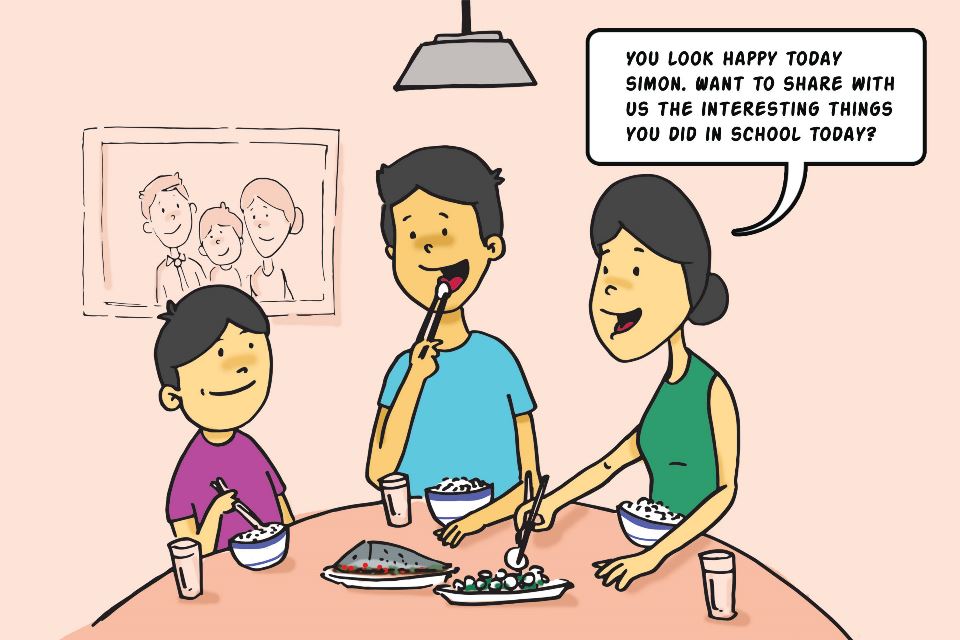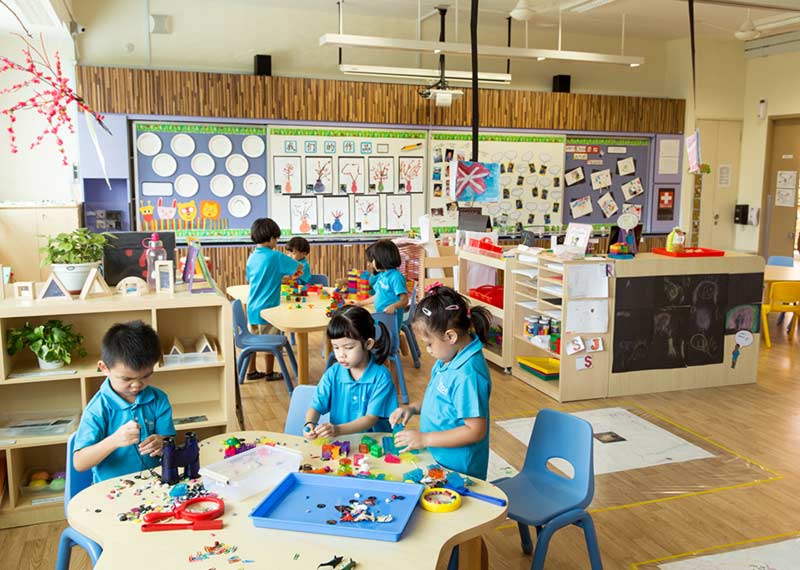The conversation began a few years back. My wife and I were mulling over which kindergarten to place our eldest child in when she turns five. We were new to this preschool stage, but as an educator, I knew that a good start and a good foundation would
make a difference to how she appreciates school life later.
I also wanted to ensure that our daughter, who could be clingy at times, would be happy when away from us for those few hours every day.
We have three children, aged five, three and one, and for convenience, we’d like to send all three to the same preschool. What that means is the outcome of this decision would help us decide where the next two will go. The effort at the checklist will pay for itself!
And so, like the responsible administrator I am (I hope my wife is reading this), I came up with a checklist of features that our dream preschool should have.
Then I started making a list of the preschools I should check out, based on our friends’ and neighbours’ recommendations. But in 2021, lo and behold, a prime candidate wedged its way into the top of my shortlist.
One day, a banner popped up on the fence of a primary school in my estate. It announced the upcoming opening of an MOE Kindergarten (MK) near our home! As an educator with MOE, I was already sold on the curriculum philosophy that MKs embrace. So imagine
my excitement that there’d be one coming up just a 5-minute walk away! Very quickly I could picture myself waking up later than I had anticipated to send my daughter to school every day. Wishlist box No.1, check!
Fast forward to 2023 and my daughter is now a few months into her journey as an MK student. Is it all I wanted it to be? I went back to the priorities we had identified back then; let’s see how the preschool checks out so far:
1. Proximity
My wife and I are working parents, so proximity was a HUGE consideration. We were expecting mornings to be a struggle getting ourselves and children ready. So, going to a school which is a stone’s throw away made a whole lot of sense.
In reality, the morning routines haven’t gotten any easier; some days it is still a struggle getting out of the house. But hey, more sleep.
2. Ample space to play and explore
Students learn better through play, and having enough space certainly helps to create more opportunities to do so. All MKs are housed within a primary school, which means all of them have access to the open spaces and facilities within the grounds of the primary school, including everything from gardens to soccer fields. This is on top of facilities such as sand and waterplay areas that come with the MKs. I was very excited that my daughter would have access to a wide range of facilities that would typically come at a premium.
Knowing all this, I got a little alarmed every time I asked my daughter what she had learned that day in school. The answer was always the same: Nothing. What? All those facilities and, nothing? That was until it dawned on me that she didn’t see her experiences in school as learning – she saw it as play! When I changed my question to “what did you enjoy doing today?”, she couldn’t stop filling me in with a whole bunch of experiences that were fun-filled and meaningful learning opportunities for her. She used her five senses to explore different fruits on one day, grow green beans to learn about the life cycle of plants the next, and played games to explore the basic strokes in Chinese characters the day after.
Her current favourite? Whizzing around the courtyard on a tricycle, which has certainly helped in her gross motor development – and helped me check wish list box No.2.
3. Getting the Singapore experience
Another key feature of the MK experience that resonated with me is how the MK syllabus has a distinctive Singapore flavour. Don’t get me wrong, I have nothing against princesses, knights and dragons and how they can magically spice up our story time. But learning within a local context can spark interest, awareness and connection with our immediate environment and encourage more active participation from students, since they are talking about something familiar to them.
MK offers several mother tongue languages as part of their curriculum. My daughter’s exposure to Mandarin has resulted in her use of some simple phrases with us – to the delight of her predominantly English-speaking parents.
In just these few months, I have seen how my daughter has become more aware of what is going on around her and draws references from what she has learned in school. She came back from school one day and started asking us quite a few questions about who our extended family was.
“How do I call grandma’s mummy? Where is she now? How old is she?”
We scratched our heads at the questions that appeared to come from nowhere.
We were wondering where all this curiosity about our heritage came from, then found out later from her teacher that they had been exploring the concept of family and how each family member may be addressed using different terms.
As a Singaporean, I also believe that it is important for my children to be plugged into the multiracial, multilingual and multi-religious society that we live in and learn to interact with those different from ourselves. So, I was excited when on the second day of school, my daughter came home and shared about a new friend from a different race and wanted to invite her home for a play date. Third box, check!
4. Activities that bring the family together
“There is homework this weekend!” buzzed the group chat that I am in with a bunch of MK parents in my estate. Erm, homework already, in kindergarten? I winced at the idea. That was until I learned more about the assignment.
The family-based activity (there is typically one every other week in either English or Mother Tongue) introduced a raft of ideas for me on how to spend time with my daughter in conversation and play. One of the first activities was to have a conversation with my daughter on how we chose her name – that’s not homework at all! My wife and I, who never had this conversation before with my daughter, had a great time reminiscing and sharing with her about those sweet moments that led to how we chose her name.
Another activity involved us playing a scavenger hunt. My daughter had just learned about shapes in class so we were tasked to find these shapes in our home. I really appreciated how the environment of our home was transformed into the site of a quest, and also allowed us to rope our two-year-old into the fun. Making meaningful connections between school and home? Big check for box No.4.
It was through all these activities that I learned what interests her, what she can do, and what she needs more help exploring.
So for my report card for the first few months of preschool, I gave it a pretty easy A, for “A safe, fun and inspiring space to grow in”. I’m looking forward also to see what more is in store for her and her siblings on their preschool journey ahead.
“Play is learning for children. Play is really how children learn and make sense of the world,” says Dr Nirmala Karuppiah Head for Education at NIE’s Centre for Research in Child Development. Read “Learning does not stop when play begins” to find out why play is one of the most important ways in which children learn.
Just how much does a child need to know in order to be ready for Primary 1? Read “Are you over-preparing your child for P1?” to find out more.



.jpg)


